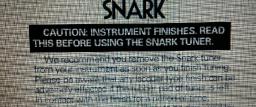What songs were you taught in kindergarten/grade school?
General mountain dulcimer or music discussions
I recall a song about the musical instruments: "The clarinet, the clarinet goes doodle, doodle, doodle, doodle det... The violin's singing with lovely ringing... "
My dad used to sing us a song with the lines "Hush, hush, whisper, Who dares? Christopher Robins is saying his prayers." when he was putting us to bed.
In the car, he'd sing The Whiffinpoof Song, St. James Infirmary and Frog Went A Courting. He ended the song with verses I've not heard anywhere else:
They paddled off across the lake uh huh,
They paddled off across the lake uh huh,
They paddled off across the lake
And were swallowed up by a big black snake
Uh huh, Uh huh, Uh huh.
Well that was the end of him and her, uh huh,
That was the end of him and her, uh huh,
That was the end of him and her
Now we won't have tadpoles covered in fur,
Uh huh, Uh huh, Uh huh.
I taught school for thirty some odd years and some of that time was spent teaching music to kindergarten to grade eight students. Some songs that went over very well with kids were Pete Seeger's Abyoyo, Carl Martin's The Vegetable Dance, the old jug band tune Boodle Am Shake, a song I learned in Scouts called The Watermelon Song and Hopalong Peter, a tune I learned from The New Lost City Ramblers.
My first dulcimer, made in about 1970, before I knew much about building instruments, stated in my classroom and kids were welcome to use it. The diatonic scale made it easy for kids to pick out tunes or invent their own. This old dulcimer, made from a the wood from a hollow core mahogany door and model railroad plywood for the top, has a lot of battle scars from kids playing it, but has given a lot of kids a lot of fun.
updated by @jim-yates: 02/09/17 11:12:18AM






 12-hole harp from Grandpa Charlie
12-hole harp from Grandpa Charlie 14 hole C harp
14 hole C harp 10 hole Echo Super Vamper
10 hole Echo Super Vamper
 Our back room has an old foundry mold (I have no idea what the product was.) with a carved rosewood elephant sitting on it.
Our back room has an old foundry mold (I have no idea what the product was.) with a carved rosewood elephant sitting on it. 
 This is an old Oscar Schmidt guitar zither that hangs on our back room wall. I also have a mandolin zither that was given to me by a cousin, but it hasn't found a home. I doubt these will ever be played, but they look neat.
This is an old Oscar Schmidt guitar zither that hangs on our back room wall. I also have a mandolin zither that was given to me by a cousin, but it hasn't found a home. I doubt these will ever be played, but they look neat.
